
1. Beginner Golf Tip: How Many Clubs Should You Carry?
While you’re in the novice stage as a golfer, you don’t really need a full set of 14 clubs (the maximum allowed by the rules). In fact, you’re better off cutting that number down nine or 10, which will make club selection easier on the course and boost the quality of your practice. Let’s start by eliminating a handful from your bag. If you’re not sure what each club is used for, read this tutorial covering woods, irons and hybrid clubs. As you improve, you’ll want to add clubs to reach the full complement of 14.
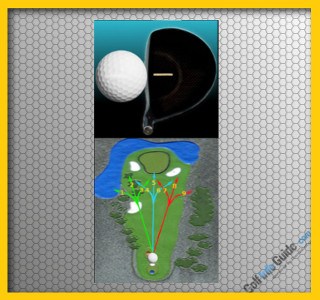
2. Beginner Golf Tip: How To Hit the Driver
Everyone loves to hit the ball long and straight down the fairway. At the same time, no one wants to crush one out of bounds or into a hazard. In fact, a good driving game will be the key to setting up the rest of your golf shots for success. Conversely, a few bad drives can be devastating to your entire round. One key basic to hitting long consistent drives is to not overpower the shot which can cause a lot of problems. Its easy to get excited and try to hit the ball as far as you can. This will be counterproductive, however, and can actually prevent you from hitting the ball long and straight. You want to take a full and smooth swing just as you would with any other golf club.
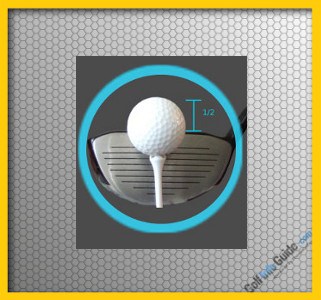
3. Beginner Golf Tip: Correct Tee Height for Hitting the Driver
What’s the first thing a golfer does on every hole? Places the ball on a tee, of course. While the basic task is incredibly simple – stick the tee in the ground and put the ball on top – it’s important to do it right. If the ball is teed too high or too low for the club you’re using, you’ll put yourself at a disadvantage before swinging. This is the last thing you want when hitting your driver (#1 wood), because you’ll lose distance and possibly accuracy, too.

4. Beginner Golf Tip: Which Club Should You Use to Chip?
Chipping the ball is one area in which a golf beginner can become proficient fairly quickly. The swing is very short, so it's easy to make solid contact and earn a nice result. There are two primary components required to become a good chipper: correct technique, and understanding which club to use for different situations.
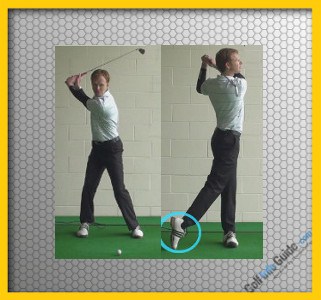
5. Beginner Golf Tip: Golf Swing Follow Through
You may think your shot is over after you've made contact with the golf ball, but this couldn't be further from the truth. The follow-through is just as important as your backswing, because the follow-through is a reflection of what happened before contact. If your stance, grip, takeaway or any other segment is amiss, it will show up here. During the downswing, your weight should shift from the right side (for right-handed players) to your left foot. This should happen naturally if the swing is properly executed.
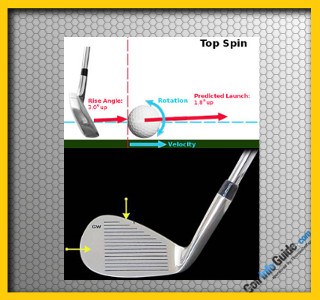
6. Beginner Golf Tip: How to Choose the Correct Club for a Shot
There are two primary inputs in determining the club for a specific shot: Your distance to the target, and how far you normally hit each club. There are several different ways to figure out your yardage to the green or another target. Knowing your own club distances takes time and experience, but you can start on the driving range; most ranges have markers set at specific distances, such as 50, 100, 150 and 250 yards.
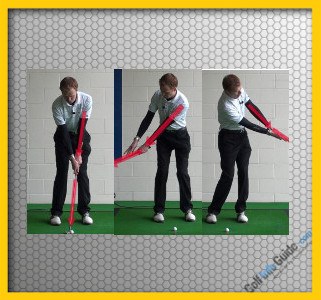
7. Beginner Golf Tip: How To Chip
Chipping is often an overlooked area of the game for many amateur golfers. The reason being that we won't always need to use a chip shot on every hole. If you hit every single green in regulation, you're not going to find many situations where you need to hit a chip shot. However, for those of us who miss the occasional green, a chip shot is going to be a crucial tool to helping you complete the hole in regulation. A chip shot is similar to a pitch shot, except that it's even a shorter version of the swing. A chip shot will likely be hit when you are about 20 yards or closer to the pin.
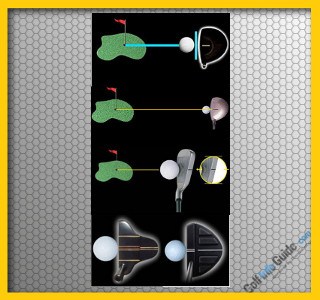
8. Beginner Golf Tip: How To Aim
Golf is a target-oriented sport, meaning the object is to get the ball to a specified point. From the tee, your target is the fairway. With an approach shot, your target is the green. Once you've reached the green, your target is the cup. The point is, the correct aim is truly fundamental to playing golf. Without proper alignment, you're setting yourself up for problems right out of the gate. For the beginner, proper alignment requires that both the body and club are square to your desired target.
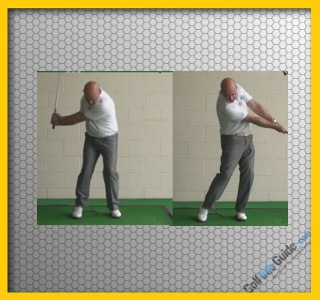
9. Beginner Golf Tip: How To Play the Half Golf Swing
Once you've developed your setup and takeaway, it's time to graduate to the half swing, which is a great way to build fundamentals for the full swing. Think about your golf swing as a clock, with 12:00 above your head, 9:00 directly to your right (for a righty), 6:00 at your feet and 3:00 directly to your left. On a half swing, your hands will stop at the 9:00 mark on the backswing – with the left arm parallel to the ground — and at 3:00 on the follow-through.

10. What's In Your Bag? The No-Gaps Golf Club Set
Do you often find yourself stuck “between clubs” in the fairway, with a decision to make between a club that you hit farther than the required distance and another that flies shorter than what you need? Of course you do – it's the nature of the game. However, if your set is properly assembled, you'll face fewer of these situations. And when you are between clubs, the difference between the longer club and the shorter one will be narrower and easier to handle.





